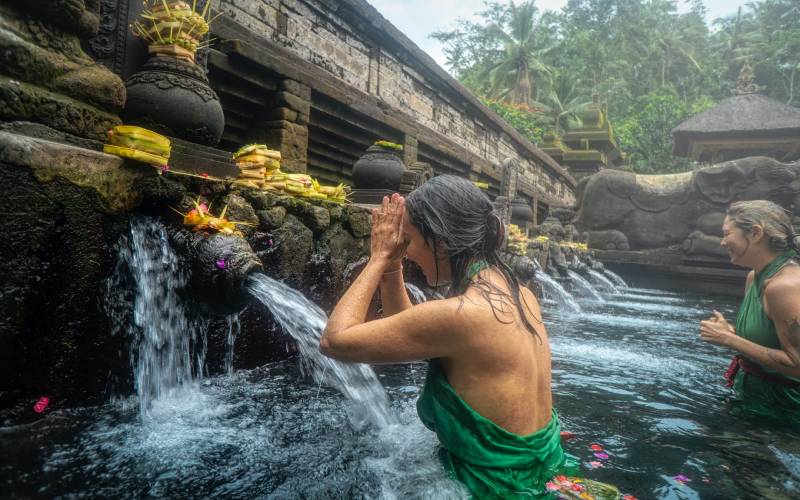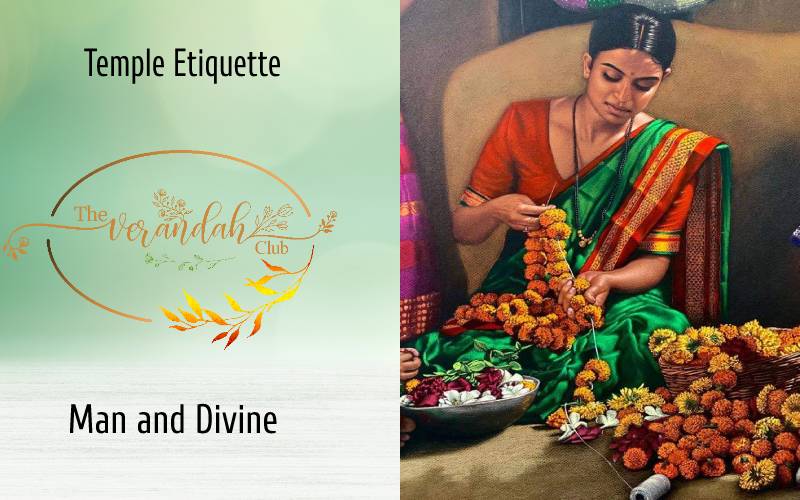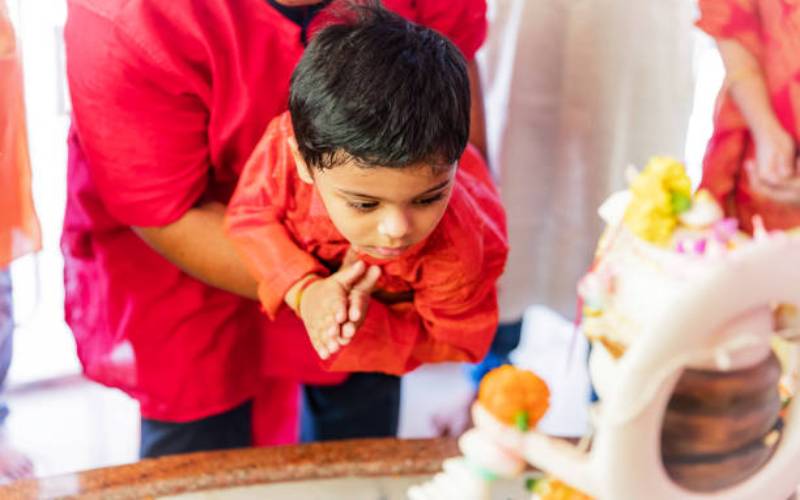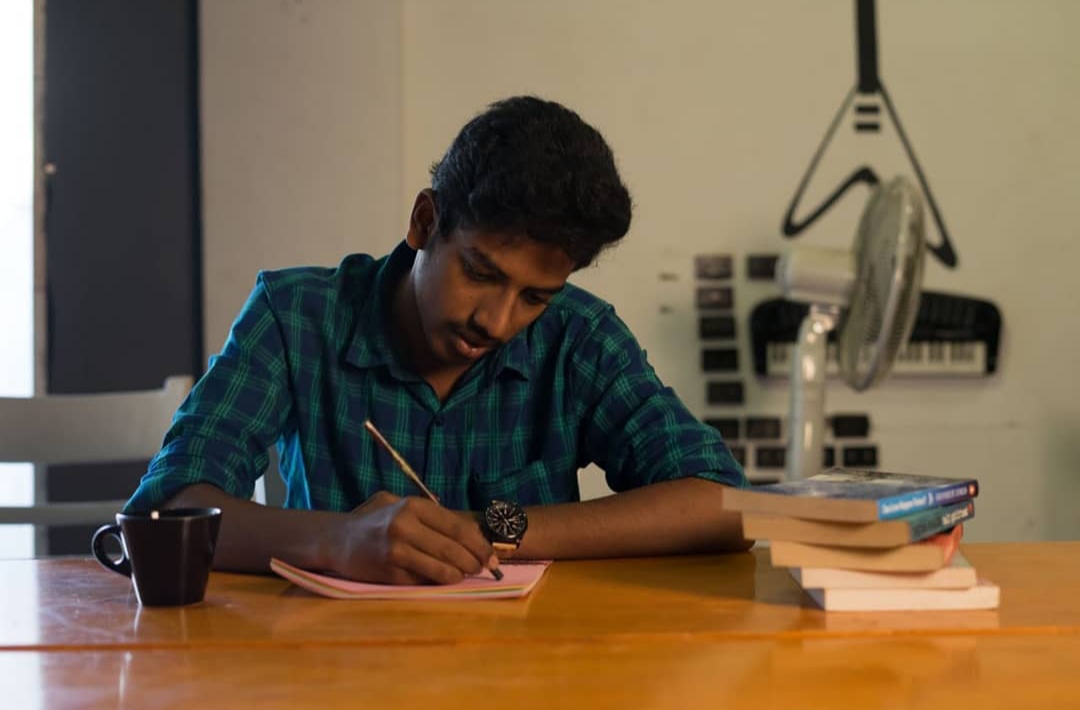Temple has an immense conjunction with one’s life. A newborn child is named by the temple and the ashes of the one deceased are spread across the temple river or the ocean to exhort that we came through his providence and will reach the same. However, the role played by temples in between life and death is remarkable.
Temples are not just the abode of God, but also the dissolving point of boundaries between the man and the divine. Temples in India had roles beyond worship. The olden days did not have coffee clubs, marriage halls, and law courts. It has been a place of gathering, place of celebrations and place of serving justice in villages. I remember reading news about people gathered in temples during the flood in Chennai. It has also proven now to be a safe place during pandemics.

I used to spend most of my childhood days alone at home. It was typical in families where both the parents had to work to support the family. The Kaattu -Vinayagar temple in our street used to be my refugee camp in the evenings. Many other kids in the street shared the privilege with me. We used to run around the huge banyan tree, jump higher every day to reach the temple bell and retell the stories told by lady Nithyakalyani on Fridays at the temple. I have closely watched over the temple activities and have developed a close affiliation with them.
The temple practices intrigued me to learn more about them, and thanks to Mr. Muthukrishnan, a brahmin friend of our family who explained to me the reasons behind the temple practices. He started by dusting his spectacles, “The act of going to a temple begins at one’s heart whereas, the earnestness in the same begins at one’s attire.”
One must take a clean bath by the river or at home to be pure before entering a temple. Men are expected to remove their shirts and women are expected to cover their heads. Luxurious clothes are not advised inside the temple. This is to express that miniscule of man in front of the almighty. Be the devotee, a king or a layman, God treats him with no partiality. Hindus have greater reverence for the cow(Ko Matha). They do not wear anything made of leather inside the temple. Wallets, bags, belts and shoes are mostly left outside in the guard.

The devotees do the flower offering to the deity. It is done to illustrate the love and devotion they have for the god. Some make the garland by themselves with the hand-picked flowers. I have seen women sitting across the Mandapam(temple hall) or over the Thinnai(slap outside the temple to sit) tying garlands. We children would sit with them and hand them flowers as they spin. They would recite God's name while their hands spun thread around the flowers. We did not know why we recited it along with them, but it made our evenings better.
The next stage of worship would be the pradakshinam(circumambulation of the temple). Deities walk around the temple in a clockwise direction to remind themselves of the path of dharma. It is carried out in odd numbers rather than even as the odd numbers are considered auspicious. However, we children knew not the counts we ran around the temples, then be the even and odd. The deities with special prayers would also do Adipradakshinam or Angapradakshinam. Adipradikshinam is a practice of circumambulation by placing one foot against the other and Angapradakshinam is a practice of revolving the temple by rolling. The word Adi means foot and Anga means body.

The Viboothi or Thiruneer (The holy ash) is applied across the forehead and sometimes in other parts of the body. It is made of burnt dried wood and burnt cow dunk. It is to imply that we are not bound to any worldly things and that the mortal human body is a mere ash. The holy ash purifies our soul and elevates us towards God. My mother would apply the Thiruneer on my forehead and I would request to eat the excess. I liked the taste of it, and so did other children. Alternatively, a thirunamam is worn in Vishnu temples. It is a vertical line drawn between the eyebrows. It is made of white clay found at the deeper layer of the earth. Thirunamam represents Aatma Jyothi, to signify that the Aatman(Universal Self) is considered sacred as the name of God.
The framed structure of etiquettes brings discipline into the life of a person. When Gurus says that the pradakshinam is a path of dharma, it is also the path of discipline. The world is running behind speakers and leaders in search of motivation, while discipline can bring wonders in one’s life that motivation can not. In Indian culture, discipline is taught not through punishments, but through subconscious practices and etiquettes. These practices are brought down by the children, instead of being passed on by the parents, which makes it divine.
 Vigneshvaran is the special correspondent of the company. He is a graduate of English Literature who shows great interest in analysing various practices followed in Sanatana dharma. He is a practical person with a curiosity to learn everything by experiencing. He is also a staunch nationalist and writes poem both in English and Tamil. Vignesh also is an excellent orator.
Vigneshvaran is the special correspondent of the company. He is a graduate of English Literature who shows great interest in analysing various practices followed in Sanatana dharma. He is a practical person with a curiosity to learn everything by experiencing. He is also a staunch nationalist and writes poem both in English and Tamil. Vignesh also is an excellent orator.
NEXT ARTICLE